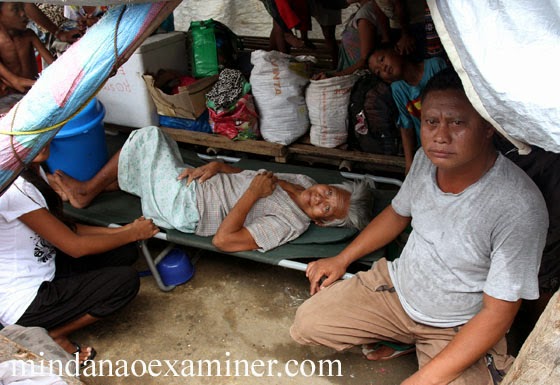
MANILA – Nine months after fighting stopped between a faction of the Moro National Liberation Front and government troops in Zamboanga, a reported 40,000 people remain displaced from their homes, living in difficult conditions in overcrowded evacuation centers or hosted by relatives and largely dependent on humanitarian assistance.
Many of the displaced were trapped in poverty even before the clashes in September last year left them bereft of their homes and without the few assets they had possessed.
“Progress has been made in relocating a number of displaced people to transitional sites around the city. Nevertheless, efforts should continue to ensure that services such as water supply and sanitation are provided before moving people to these transitional sites. Especially now with the start of the rainy season, which will put additional strain on an already vulnerable population,” Pascal Mauchle, head of the delegation of the International Committee of the Red Cross (ICRC) in the Philippines, said in a statement sent to the regional newspaper Mindanao Examiner.
Poor sanitation practices and unsuitable facilities in evacuation centers along the Cawa-Cawa shoreline and the Joaquin Enriquez Stadium, still housing 17,000 displaced, create ideal conditions for the spread of disease.
Working with the Philippine Red Cross and in conjunction with the local water board, the ICRC is improving the sanitation and water supply in various evacuation centers and transitional sites. In recent months, the organization has also sought to strengthen the resilience of the displaced community through cash-for-work schemes and unconditional cash grants, benefiting nearly 50,000 people.
“These people struggle every day to make ends meet. Not knowing when they will be able to resume their normal lives is a tremendous burden on an already exhausted community,” Gareth Gleed, the delegate in charge of ICRC activities in Zamboanga, also said in the same statement.
Dora Kasim, a beneficiary of the cash grant program, explained the ordeal experienced by her family: “We were living from seaweed farming, but when fighting broke out we had to flee and leave our home and belongings behind.” When she and her family finally managed to return to their coastal village, nothing was left. “I was in a daze,” Kasim said. “Without any money to start over with, we depended on relief to feed our children. We received cash from the ICRC and used it to buy seaweed and a new paddle boat.”
While they have slowly managed to restore their livelihood, Dora’s family doesn’t want to be relocated far from their farm and the children’s school because they can’t afford the transport. “It’s a choice between feeding our children and having to pay for public transport. We can’t afford both,” she explained.
In a bid to improve the overall health situation, the ICRC is refurbishing health stations damaged in the fighting and providing medicines, other supplies and technical and financial support to the local health authorities and the Zamboanga City Medical Center.
In May, the ICRC set up a nutrition program for malnourished children under five years of age and for pregnant and lactating women with a view to reducing the number of preventable deaths. So far 225 children and 32 women are being followed under this program. In addition, multipurpose halls are being built in three evacuation centers to carry out hygiene promotion, nutrition and health-care activities.
